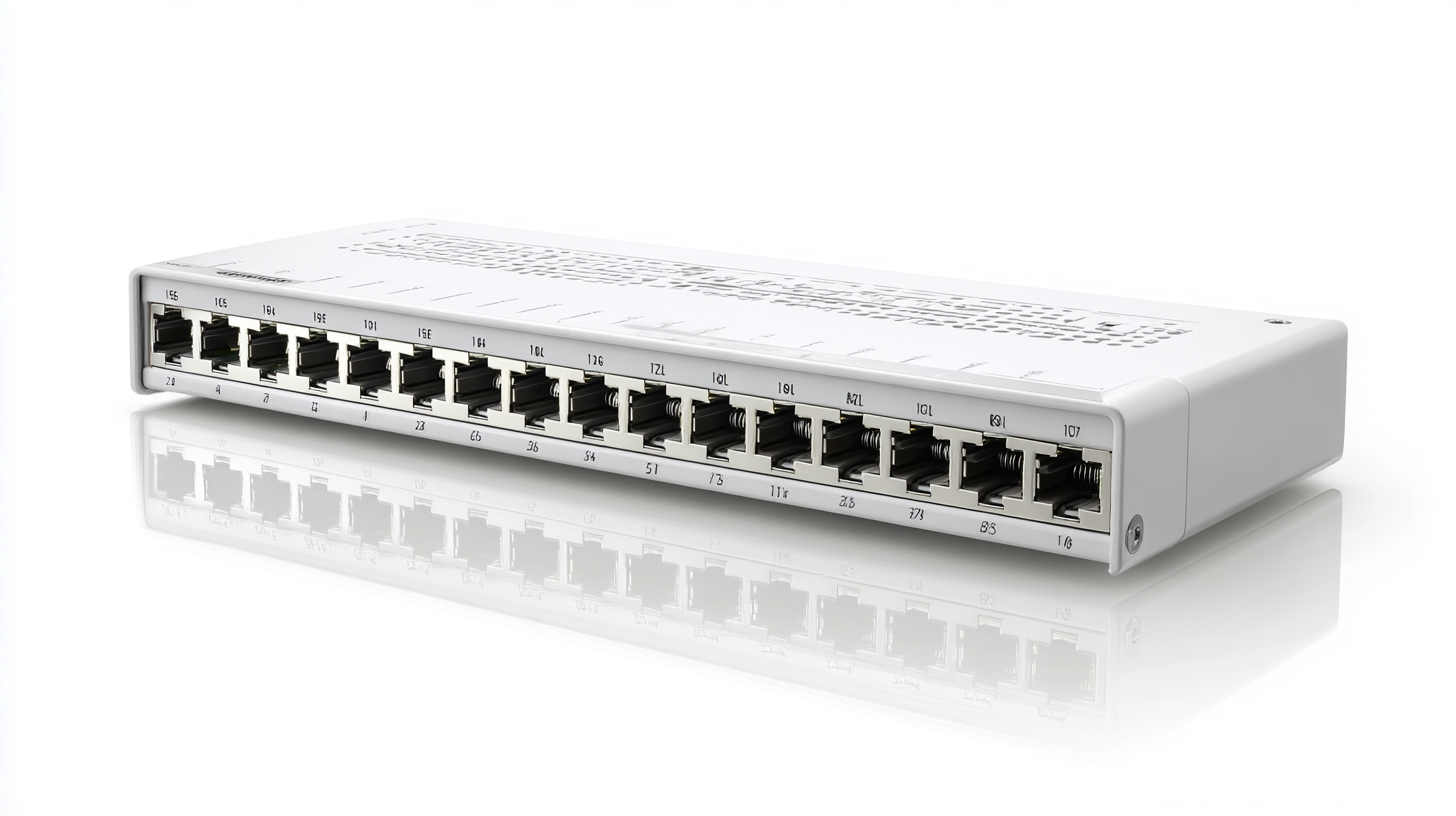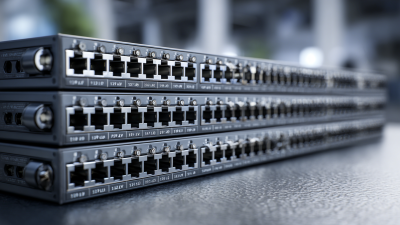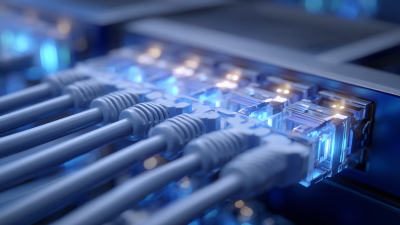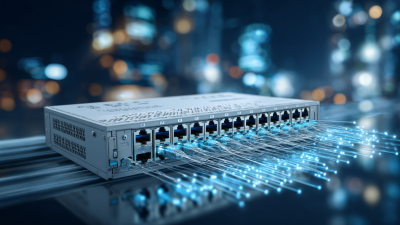
- hasivo@hasivo.com
- Mon - Sat at 7:00AM to 9:00PM
Leave Your Message

As smart home technology continues to gain traction, the demand for efficient and reliable networking solutions is paramount. The L2 Managed Poe Switch has emerged as a critical component in facilitating seamless integration of smart devices, offering both power and data connectivity over a single cable. According to a recent report from the International Data Corporation (IDC), the global smart home market is expected to reach $174 billion by 2025, showcasing a compound annual growth rate (CAGR) of 25%. This growth underscores the importance of robust infrastructure, where L2 Managed Poe Switches can efficiently manage network traffic and power supply to devices like IP cameras, smart thermostats, and lighting systems. Furthermore, Gartner predicts that by 2024, 75% of medium and large enterprises will leverage PoE technology to simplify their network management, directly aligning with the increasing complexity of smart home ecosystems. Thus, incorporating L2 Managed Poe Switches not only enhances the operational efficiency of smart homes but also significantly contributes to their scalability and reliability.

 Layer 2 Managed Power over Ethernet (PoE) switches play a crucial role in enhancing smart home technology by providing a seamless and efficient network infrastructure. One of the significant advantages of these switches is their ability to deliver power and data through a single cable, reducing clutter and simplifying installation. This is especially beneficial in smart home environments, where multiple devices such as security cameras, access points, and smart lighting systems require both power and connectivity. By using Layer 2 Managed PoE switches, homeowners can eliminate the need for additional power adapters and outlets, leading to a more organized and aesthetically pleasing setup.
Layer 2 Managed Power over Ethernet (PoE) switches play a crucial role in enhancing smart home technology by providing a seamless and efficient network infrastructure. One of the significant advantages of these switches is their ability to deliver power and data through a single cable, reducing clutter and simplifying installation. This is especially beneficial in smart home environments, where multiple devices such as security cameras, access points, and smart lighting systems require both power and connectivity. By using Layer 2 Managed PoE switches, homeowners can eliminate the need for additional power adapters and outlets, leading to a more organized and aesthetically pleasing setup.
Furthermore, Layer 2 management capabilities allow for advanced network monitoring and control, enabling users to prioritize bandwidth and manage traffic effectively. This is essential for smart home systems that depend on reliable and uninterrupted connectivity, such as streaming services and remote access applications. With features like VLAN support and Quality of Service (QoS) settings, these switches provide the flexibility to optimize network performance based on specific needs. As smart home technologies continue to evolve, leveraging the advantages of Layer 2 Managed PoE switches will ensure a robust and scalable network that accommodates future expansions and innovations.
L2 Managed PoE switches have become essential components in enhancing smart home technology. These devices not only provide power over Ethernet for various devices but also enable better management and efficiency through advanced features. One key feature is VLAN support, which allows users to segregate traffic and enhance security within the home network. According to industry reports, implementing VLANs can reduce network congestion by up to 40%, ensuring smoother performance for smart devices.

Another significant advantage of L2 Managed PoE switches is their ability to facilitate Quality of Service (QoS) settings. This feature prioritizes network traffic, ensuring that critical applications such as video streaming and voice over IP (VoIP) maintain high-quality performance. With flexible QoS configurations, users can optimize their networks for the demands of modern home automation, which is increasingly essential as the number of connected devices continues to rise. Research indicates that homes with over 20 connected devices can see a degradation in performance without prioritization, highlighting the necessity of using switches that can manage traffic efficiently.
As smart home technology continues to gain traction, integrating smart devices seamlessly has become a primary concern for homeowners. Power over Ethernet (PoE) technology stands out as a game-changer in achieving this connectivity. With PoE, both power and data are transmitted over a single Ethernet cable, simplifying installation while ensuring that devices remain powered and functional. According to a recent report by MarketsandMarkets, the global PoE market is expected to grow from $1.47 billion in 2020 to $5.57 billion by 2025, indicating a robust demand for efficient smart home integrations.
Seamless connectivity not only enhances the user experience but also plays a crucial role in the functionality of smart devices. For example, smart security cameras, doorbells, and lighting systems benefit from PoE's ability to transmit data and power without the clutter of multiple cables. A report from Grand View Research highlights that smart lighting revenue is projected to reach $35.8 billion by 2028, with PoE technology serving as a backbone for device connectivity. By leveraging L2 managed PoE switches, homeowners can achieve reliable and scalable solutions, ensuring their smart homes are equipped for future technological advancements.
In the era of smart home technology, optimizing network performance is crucial for seamless integration of various devices. L2 managed PoE switches are specifically designed to enhance the connectivity and efficiency of smart home systems by providing advanced features such as traffic management, Quality of Service (QoS), and VLAN support. By prioritizing data packets, these switches ensure that high-bandwidth applications—like video streaming and IoT device communication—receive the necessary bandwidth to function smoothly, minimizing disruptions in the home network.
Moreover, L2 managed switches enable centralized management of connected devices, allowing homeowners to monitor and control their network performance in real-time. This capability is essential for adapting to the dynamic requirements of smart home technology, where multiple devices may demand varying levels of network resources. With the ability to configure network settings and troubleshoot issues from a single interface, users can significantly improve reliability and responsiveness in their smart home environment, ensuring a more integrated and user-friendly experience.
This chart illustrates the impact of using L2 Managed PoE Switches on network performance metrics in smart homes, including bandwidth usage, latency, and device connectivity. The data showcases improvements in performance over a typical smart home setup without L2 managed switches.
In today's digital age, smart home technology is rapidly becoming an integral part of everyday living. Among the various components supporting these systems, L2 managed Power over Ethernet (PoE) switches stand out for their security benefits. By providing centralized control over network devices, these switches allow users to monitor and manage connected devices seamlessly, reducing the risk of unauthorized access to the network. Advanced features such as VLANs and Access Control Lists (ACLs) offer an additional layer of protection, enabling homeowners to segment their networks and restrict sensitive devices from wider network access.
Moreover, L2 managed PoE switches facilitate better traffic management within smart homes, optimizing both performance and security. They have the capability to prioritize traffic for critical applications, such as security cameras and smart locks, ensuring these devices operate effectively without interference. Enhanced security protocols, including port security and real-time monitoring capabilities, empower users to detect unusual activity promptly, further mitigating the risks of breaches. As smart home environments continue to evolve, the integration of L2 managed PoE switches provides a robust framework for safeguarding connected devices while enhancing overall network performance.





